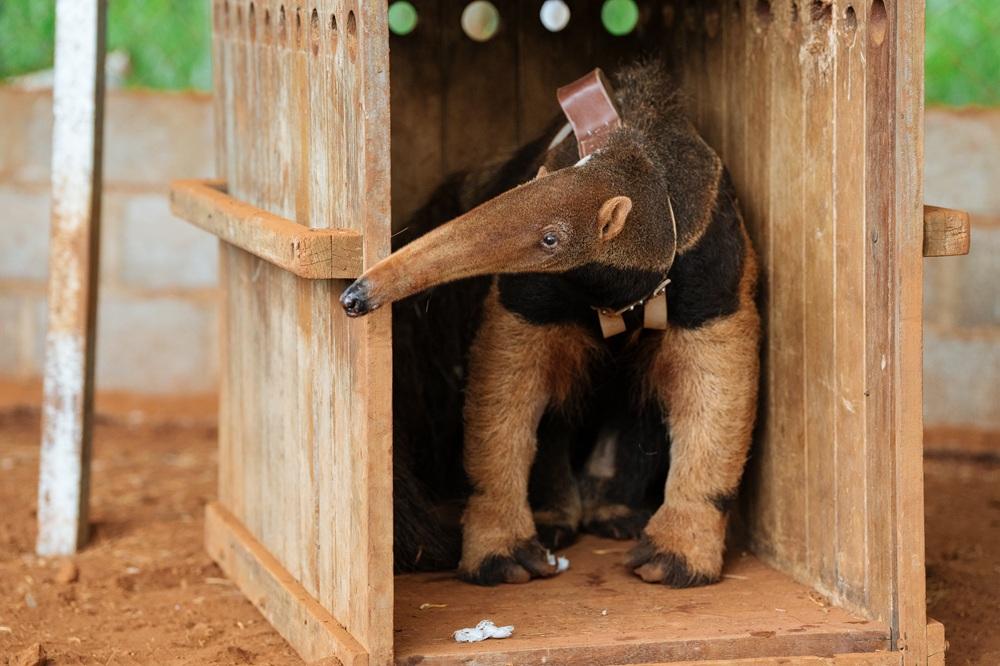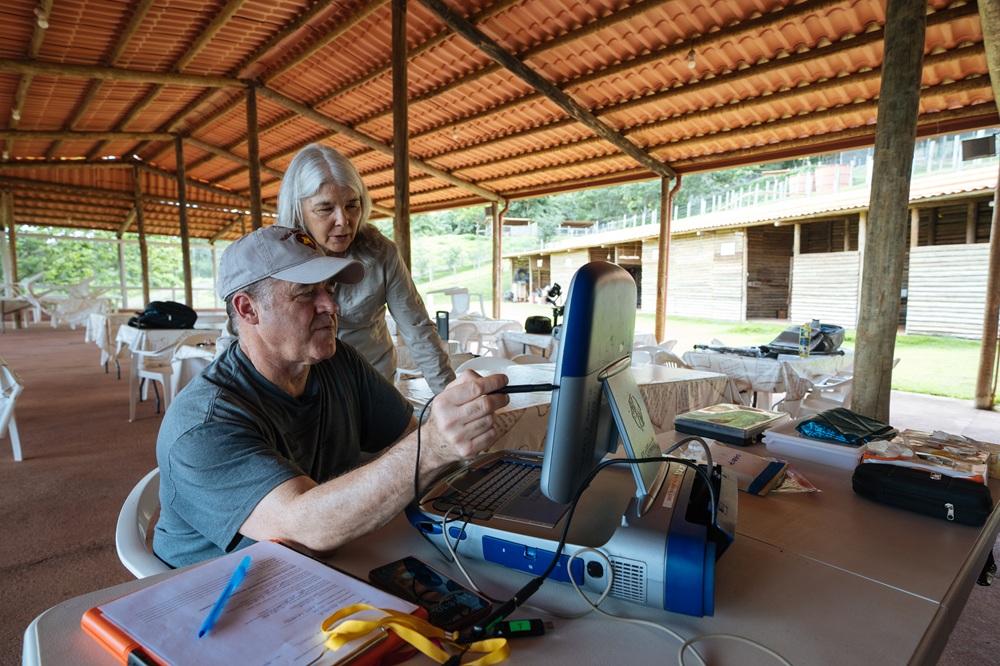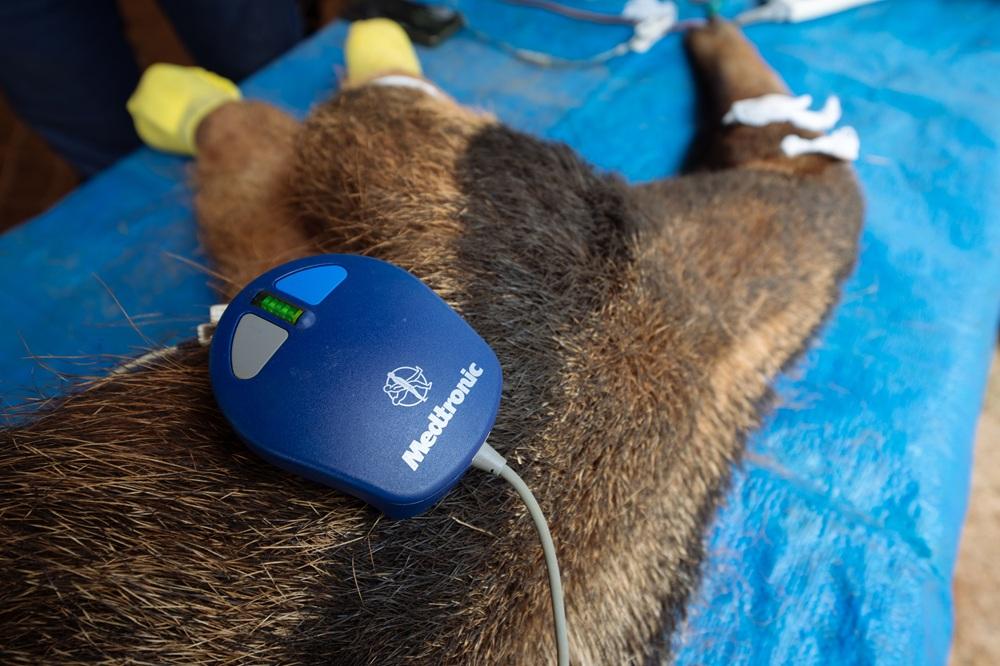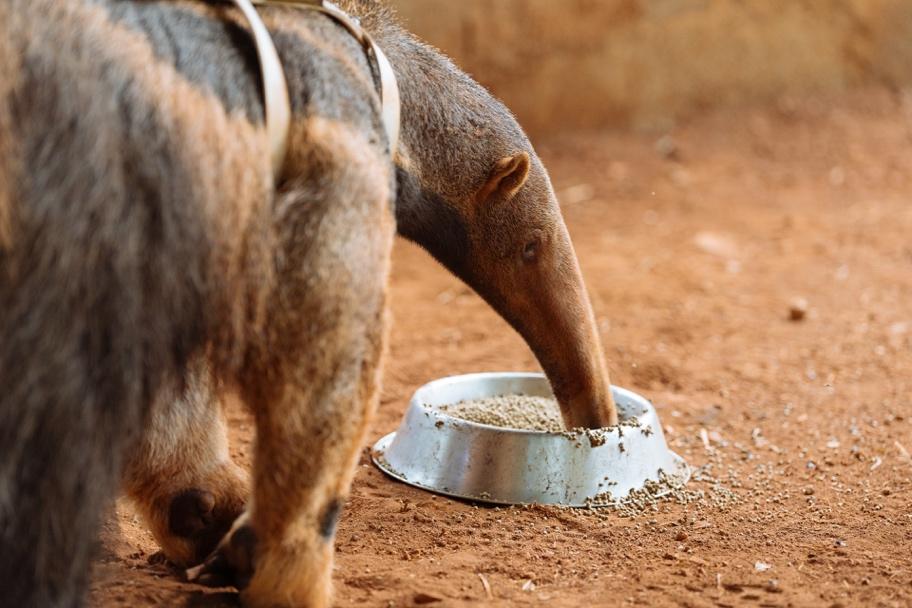At the Heart of Giant Anteater Conservation Is a Medical Device
The heartbeats of giant anteaters in Brazil tell researchers from Medtronic and the Smithsonian’s National Zoo and Conservation Biology Institute more about what’s stressing these animals
Some of the knuckle-walking, bushy-tailed, ant-slurping giant anteaters of Brazil have another fascinating trait: they’re implanted with Medtronic heart monitors.
For humans, these devices monitor heart rhythms over time and catch issues like irregular heartbeats. Researchers from Medtronic and the Smithsonian’s National Zoo and Conservation Biology Institute expanded the technology’s scope beyond human patients and have implanted the monitors in animals around the world to help conserve species.
By continuously tracking animals’ heartbeats as they move about in their daily lives, researchers can better understand their physiology. When do they thrive? What causes them stress? Both are critical questions for a vulnerable animal whose future is intertwined with human activity.
“We are coexisting in the same environment,” said Juliana Magnino, who works for the TamanduaAsas Project in Brazil, an initiative that rescues orphaned anteaters and rehabilitates them for release in the wild, and contributed to this research. “When you save an anteater, we are saving our lives, our home.”
One of the giant anteaters under observation for this project is Helen. She was re-released into the wild with a Medtronic heart monitor, the Reveal LINQTM insertable cardiac heart monitor in 2024, and researchers know she’s doing well. In fact, Helen has a boyfriend.
‘Remarkable’ data
On a humid November day at Águas Vivas, a private reserve in Brazil’s southeastern state of Minas Gerais, researchers tracked Helen and captured her.
While the team took her vitals and weighed her, Vice President of Research in Cardiac Ablation Solutions at Medtronic Tim Laske downloaded data from Helen’s heart monitor and analyzed it on a nearby computer.
“Helen’s signal quality is amazing, perfect, the best so far,” he said. “We can take note of that implant location.”
Laske examined the data alongside Dr. Rosana Moraes, a researcher with the Smithsonian. The duo called out instances where Helen’s heart rate ticked up and down.
A glimpse at wildlife
The Reveal LINQ ICM is an insertable cardiac monitor about one-third the size of a AAA battery. It’s placed just under the skin and can denote a host of heart rhythm information about a patient — in this case, a giant anteater — including heart rate variability, which is a means of measuring stress.
There has long been technology that researchers can use to track animal movements. But the Reveal LINQ ICM is unique in that it helps better understand the animals’ well-being – helping uncover stressors that may otherwise go undetected.
“Before we used insertable heart monitors, there were a lot of mysteries around the behavior of wildlife,” said Laske, who leads animal conservation work at Medtronic. “Most of the research was based on tracking their position as they traveled through the world. But we knew virtually nothing about their physiology.”
That’s all changed now. The LINQTM monitors give scientists a glimpse into the physiology of animals as they travel through their environment. Although designed for human clinical use, the team at Medtronic has created custom software tailored to monitoring the physiology of wild species.
“When we retrieve the data from these animals, it is similar to opening a present because you get a glimpse into their life over the past several months,” Laske said.
This data can help research increase breeding success rates and help endangered species from going extinct, he said.
“If we can change some of our actions in terms of conservation, we could provide better wellness to these animals,” Moraes, of the Smithsonian, said.
Good global citizens
True to their name, giant anteaters eat ants and termites, tearing into insect mounds and logs with their large claws. Their claws are so big they must walk on their knuckles to protect them.
Born without teeth, the animals leverage their long tongues and skinny heads to slurp up bugs, eating up to 30,000 every day. Their bristly, bushy tails are used for camouflage, protection from predators like jaguars, and thermoregulation.
Urbanization, vehicles, hunters, fires, and feral dogs are all threats to the creatures.
Medtronic is the largest healthcare technology company in the world, Laske said. Its engineers are equipped with not only a wealth of expertise, but also passion for conservation.
“At Medtronic, we believe, as part of our Mission, that we need to be good global citizens and provide good quality of life, both for our human partners on the planet and the wild species on the planet, as well,” Tim said.
Success story
The heart monitor research conducted in Brazil has proven that rehabilitation centers housing orphaned anteaters benefit the animals, Magnino said.
Under a pavilion at the anteater reserve, researchers finalized Helen’s well-being examination and began piecing together information. Through monitoring, they knew Helen recently spent a significant amount of time with a male giant anteater and had gained weight.
“We have very good news,” she said, clapping her hands, a smile spreading across her face. “We think Helen might be pregnant.”
Watch the video here to see the scientists in action and learn more.





